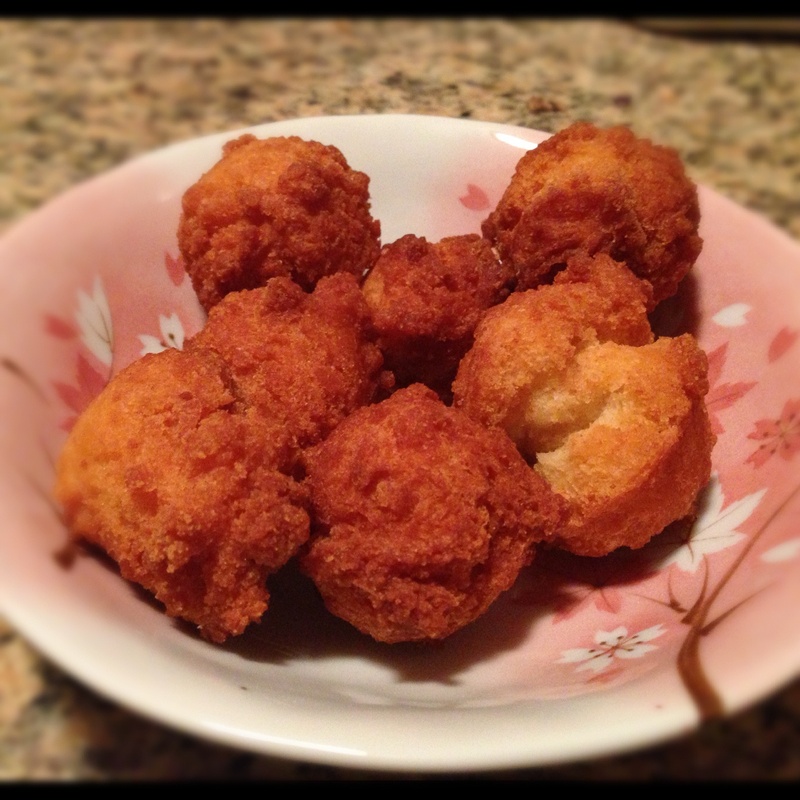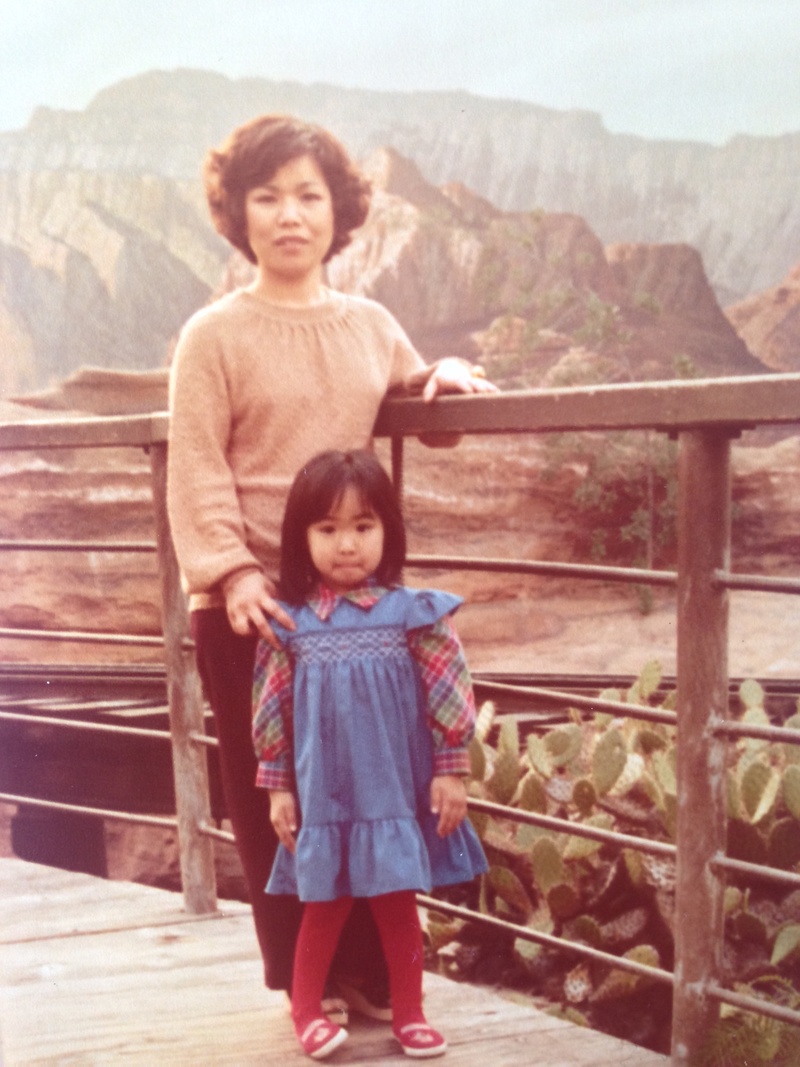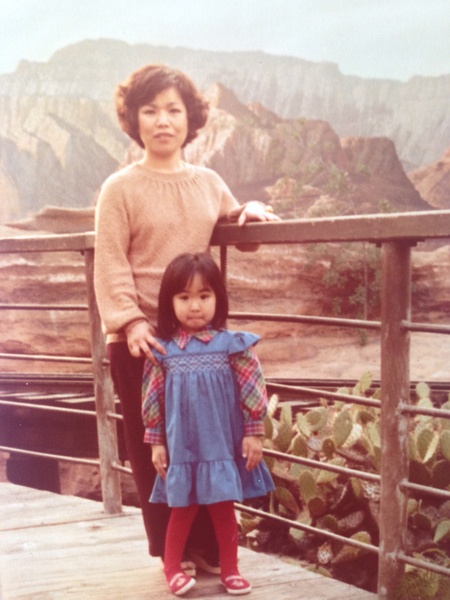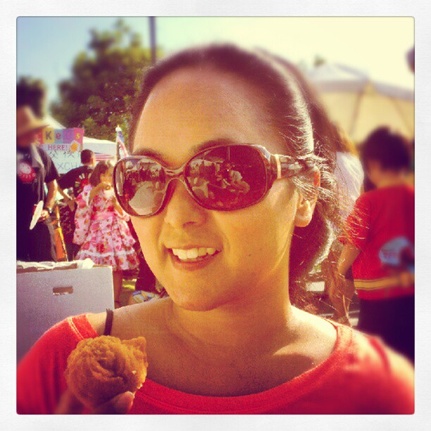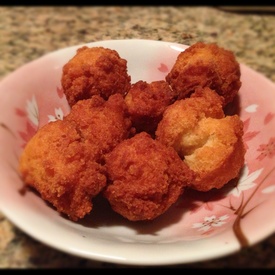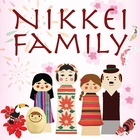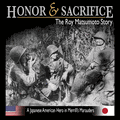Crackle!
The sound of deep-frying on the stovetop fills the house as my mom prepares her authentic andagi, our family’s favorite snack. Andagi is basically an Okinawan donut: flour, sugar, and eggs. They’re deep-fried to a golden crisp and doughy on the inside with just the right amount of sweetness—not too much, not too little, just perfect.
My childhood is full of fond memories of my mom standing by the stove making andagi, or as my family called them, sata tempura. I knew even then as a child that it made her happy to see me and my twin brother eat them all with such glee.
Nowadays, I encounter andagi more and more at obon festivals and restaurants. It’s also a nice feeling when I come across them in unexpected places—a reminder of my childhood and a transcendent connection to my heritage. I hope to continue my family’s culinary tradition by making these treats for my own family and passing on my mother’s recipes.
* * * * *
“What? Some of the words and phrases I hear my parents say aren’t Japanese?”
Not only does Okinawa have distinct traditional food items, Okinawa has a language separate from Japanese.
I was either in first or second grade when I realized that my parents spoke Japanese with some Okinawa hogen or Uchinaaguchi mixed in. Perhaps I am biased…OK, I am…but Uchinaaguchi has always sounded really cool to me, cooler than Japanese. Here are some words I recall hearing at home:
Ayena! = Oh my God!
Akisamyo! = I think this is another way to say, “Oh my God!” or “Geez Louise!”
Agaa! = Ouch!
Mayagwa = Cat
Maasan = Delicious
Niibuya = Sleepy head (What my dad called my brother)
Deiji = A lot or very
Furaagwa = Crazy person (My dad used this word often)
Ashitibichi = Pig’s feet soup (Don’t knock it until you try it!)
* * * * *
My parents emigrated from Okinawa to Los Angeles in the ’70s. I believe they had just one or two friends here when they started their new lives in a tiny apartment in what is now Koreatown. Over time, while working hard (at times working 2 or 3 jobs) and raising two kids, they assimilated into American life.
Many of my fondest memories are those times my parents spent with their fellow Okinawan friends, some from the Okinawa Kenjinkai (prefectural group) in Los Angeles. I delighted in seeing the adults speaking in hogen, laughing boisterously, drinking beer, eating traditional Okinawan dishes, and witnessing the special kinship they clearly shared. They may have left Okinawa but they sure brought her with them to Los Angeles.
As a Nisei, all grown up and having long moved out of my parents’ house, I am grateful beyond words that I was raised in a household with Japanese, Okinawan, and American cultures fused together. It’s a blend I hope to impart to my own family in the future. I am proud of my Okinawan heritage. The food, music, and language are beautiful and uniquely Okinawan. I want to keep them all alive as much as I can. I am hopeful and determined to pass on the traditions to my future children and they can do the same for their children. I want to pass the torch to future generations.
Here’s another thing I’d like to pass on…my mother’s recipe for andagi:
Recipe for Andagi (Okinawan Donuts)
Ingredients:Oil for deep-frying
A (Dry ingredients)
2 cups flour
½ cup sugar
1 tsp baking powder
B (Wet ingredients)
2 eggs
1 tsp oil
¼ cup milk
Directions:
- Add oil to wok, large saucepan, or deep fryer; amount of oil should be 3"–4" high; heat oil to 330°F–350°F
- Mix ingredients for A
- Mix ingredients for B
- Combine A and B
- Drop spoonful of dough into the hot oil and deep-fry until they are crisp, golden brown, and rise to the surface OR you can do it the old-fashioned way (and my mother’s way) and simply scoop up the dough with your hand, lift and turn palm downwards, and squeeze a ball of dough into the hot oil.
- Transfer the andagi to a tray or plate lined with paper towels; allow to rest for a couple of minutes
- Enjoy!
© 2015 Japanese American National Museum


